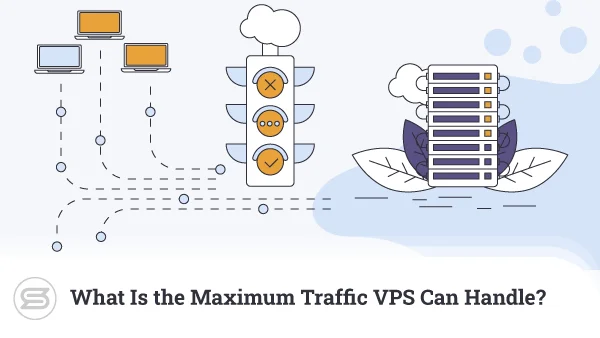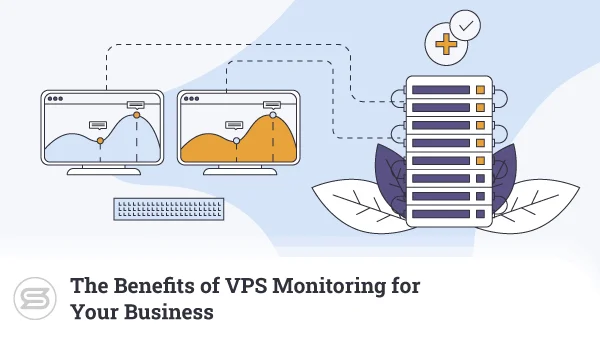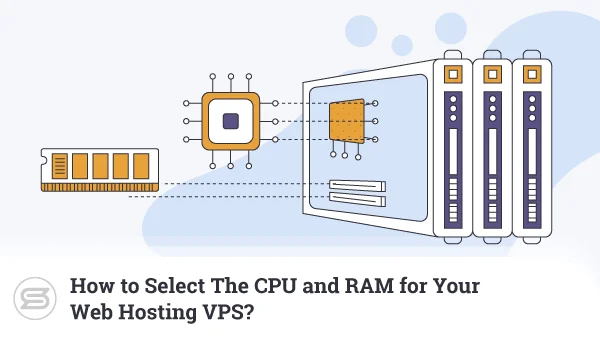Do you ever worry about your website’s reliability? You’re not the only one. Websites crash. Servers falter.
And during peak hours, even the best sites can slow down to a frustrating crawl.
This is where managed VPS hosting steps in––a solid foundation for your online presence.
Stable. Scalable. But imagine enhancing it even further. That’s where RAID technology comes into play.
RAID, or Redundant Array of Independent Disks, is a technology that stores your website data across several hard drives. This means that if one drive fails – the others keep your site running smoothly.
This means less risk of data loss. More uptime. And consistent performance, even under pressure.
In the following sections, we’ll look at how managed VPS hosting with RAID configurations can improve your website. We will see how it protects your data, prevents downtime, and keeps your site running smoothly all the time.
What is managed VPS hosting?
Managed VPS hosting provides you with a dedicated virtual server space. It’s like having your own private office in a large building, where complex technical tasks such as setup, security, and maintenance are handled by experts.
It’s perfect for those who want power without the hassle.
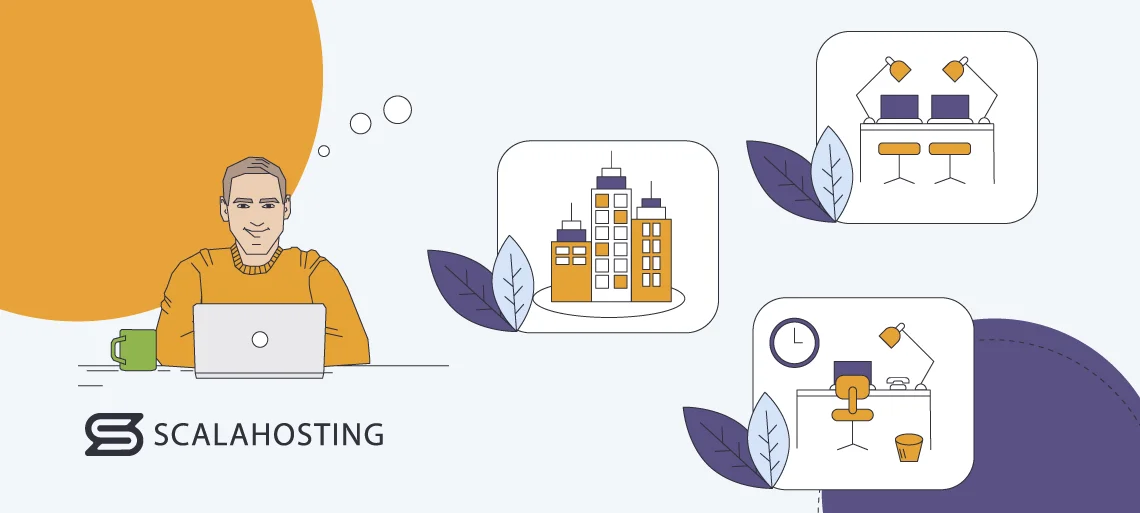
The Role of RAID in Managed VPS Hosting
In the old days of web hosting, data was like a one-man show. If that one man (or disk) took a day off (or crashed), everything came to a screeching halt. But with RAID, it’s a whole team effort. If one disk fails – another steps in without missing a beat.
It’s more than just tech
It’s not about having more – it’s about doing more with what we have. This shift from solo to symphony isn’t just technical jargon; it’s a new philosophy in web hosting.
So why should this matter to you?
Simple.
It means reliability. It means your site stays online, your data stays safe, and you sleep better at night. That’s RAID – not just a tech feature but a promise of uninterrupted service.
For example, imagine an online store during a major sale. Normally, a server failure could mean disaster – lost sales and frustrated customers.
But with RAID in place, if one disk fails, others instantly take over. The sale goes on smoothly, customers keep shopping, and the business doesn’t lose a beat.
Or consider a popular blog that sees a surge in traffic. With RAID, even during heavy traffic, the site remains fast and responsive, ensuring a seamless reader experience.
Understanding RAID: A simple guide to data redundancy
Imagine a library. In this library, every important book has duplicates. RAID does something similar with your website data. It spreads this data across several hard drives.
This is known as data redundancy.
If one hard drive fails, like a misplaced book, there’s no worry. Another hard drive has a duplicate of your data, ready to use. Your website stays up and running, safeguarding against data loss.
But there are different types of RAID:

- RAID 0: Think of your website’s data as a book. In RAID 0, each page (data piece) is stored on a different hard drive, allowing for faster access but without redundancy for data protection. It’s all about speed.

- RAID 1: This level provides data redundancy by creating a duplicate of every page of your website’s data. If one hard drive fails, the other has an exact copy, ensuring no data loss. It’s all about safety.

- RAID 5: Imagine your website’s data is a puzzle. Each piece is stored across different drives with extra information (parity) that helps reconstruct data in case of a drive failure. It balances speed and safety.

- RAID 6: RAID 6 is similar to RAID 5 as it also stores data across multiple drives with parity (extra information for reconstruction). RAID 6 enhances data redundancy by adding an extra layer of parity, safeguarding against the simultaneous failure of two drives. It enhances speed and safety.

- RAID 10: It combines the speed of RAID 0 (storing different data pieces on separate drives) and the security of RAID 1 (keeping duplicate copies), offering both performance and redundancy. It optimizes speed and safety.
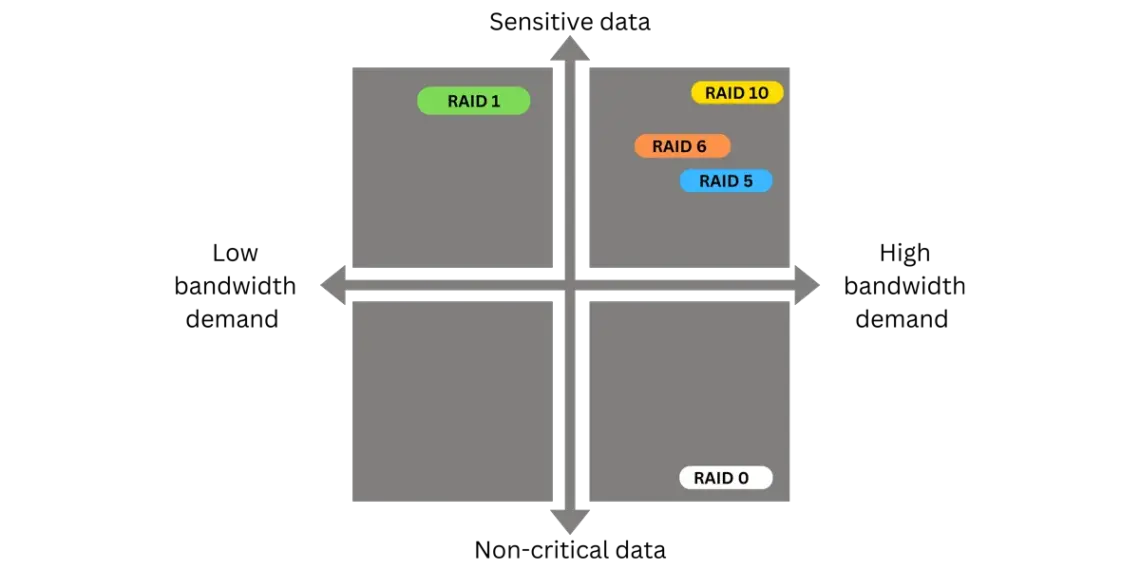
- Choosing the right RAID level: Your choice depends on what’s more important for your site—speed, data safety, or a balance. RAID 0 is fast, RAID 1 is safe, and RAID 5 and 10 offer a blend of both.
RAID Controllers: The Hardware vs. Software Showdown
In the realm of RAID, the battle between hardware and software setups is a tale of trade-offs and choices. Let’s dive in:
The role of RAID controllers
- Hardware RAID: Imagine a specialist dedicated to just RAID. This setup uses a physical controller, a kind of mastermind that handles all RAID-related tasks. It’s like having an expert in the room, ensuring everything runs seamlessly and efficiently, all while giving the main CPU a break from the extra load.
- Software RAID: Think of this as a multi-tasker. Here, your server’s main CPU doubles up, handling RAID tasks alongside its usual duties. It’s a bit more demanding on your system but scores high on flexibility and is kinder to your budget.
Pros and cons at a glance
- Performance: Hardware RAID often steals the spotlight with its ability to handle heavy loads with ease. Software RAID, while more taxing on your CPU, is a smart, cost-effective pick.
- Flexibility and Cost: If you’re looking for something easier to set up and manage, especially if you’re watching your budget, software RAID is your go-to.
- Data Protection: Both bring their A-game in protecting your data. But hardware RAID has a few extra tricks up its sleeve, like a battery-backed cache for an added layer of data safety during unexpected power outages.
Your RAID choice in managed VPS hosting
When deciding on RAID for your managed VPS, it boils down to what you value most. Is performance your top priority? Or are you looking for a balance between cost and efficiency? Whether you lean towards hardware or software RAID, it’s all about what fits your specific needs.
RAID in the world of data storage technologies
RAID has its own flair in the realm of data storage technologies. Let’s see how it stands out:
RAID vs. Single Hard Drives
- Single Hard Drives are straightforward and wallet-friendly. But there’s a catch – if they fail, your data vanishes.
- RAID, on the other hand, is your safety buffer. It spreads your data across multiple disks, so if one goes down, your data is still safe and sound.
RAID vs. Regular Backups
- Regular Backups are like your safety checkpoints, keeping data safe at intervals. They’re good but sometimes slow to catch up with recent changes.
- RAID? It’s about continuous protection. A disk fails, and RAID steps in with no gaps in your data availability.
RAID vs. Cloud Storage
- Cloud Storage is all about convenience and remote access. The flip side? It leans on your internet connection and might cost you more.
- RAID keeps it local and quick. For businesses needing fast, reliable access to their data without internet dependency, RAID is the clear winner.
RAID vs. Network Attached Storage (NAS)
- NAS is great for centralized file storage within a network. However, it may not offer the same speed and redundancy as RAID.
- RAID enhances NAS with faster data processing and added data protection, making it a more robust choice for critical operations.
RAID vs. Solid-State Drives (SSDs)
- SSDs are fast and reliable but expensive for large capacities and don’t inherently protect against data loss.
- Combine the speed of SSDs with RAID data protection and you get a
high-performance and secure storage solution.
The clear winner
RAID offers something special. Against single hard drives, it’s more reliable. When compared to regular backups, it’s more immediate. Cloud storage is versatile, yes, but RAID brings speed and consistency right where you need it.
Why choose RAID? The reasons are clear.
It’s about ensuring your website runs smoothly. Always available. Always responsive. RAID isn’t just a backup plan. It’s a strategy for stability and efficiency.
RAID & backup strategies
In the managed VPS hosting world, RAID’s your first line of defense.But it’s just part of the story.
RAID: Quick on the draw
RAID, with setups like RAID 1, 5, or 10, acts fast against hardware failures. It’s the guard on duty, ensuring no immediate data threats slip through.
But RAID isn’t a one-stop solution. It’s great against hardware issues but not so much for other risks like accidental deletions or system-wide crises.
Backups: The bigger picture
Here’s where backups come in. They’re your safety net, catching what RAID might miss.
Think of variety in your backup approach. Cloud backups, off-site storage, and even a dedicated backup server. This diversification is key to ensuring your data’s safety, no matter what.
Strategy: Sync and secure
Regular backups are non-negotiable. Set a schedule. Stick to it. This routine ensures you’re always a step ahead in data safety.
Aligning RAID with backups is crucial. Use RAID for instant data protection. Complement it with regular backups for a comprehensive safety strategy.
Why RAID is a smart business move
Alright, let’s get into how RAID in managed VPS hosting really makes a difference for businesses. RAID brings the muscle to keep websites running smoothly, protects crucial data, and basically gives your online presence a solid foundation.
But let’s break down why RAID’s not just a good choice but a smart business move.
- Uninterrupted Service: In ecommerce sites, RAID’s redundancy ensures that even if one server disk fails, others step in instantly, preventing any disruption in sales or customer experience.
- Data Security: Essential for businesses handling sensitive information, RAID safeguards against data breaches.
- Performance Efficiency: Faster website speeds lead to better customer experiences, crucial for service-oriented businesses.
- Scalability: As businesses grow, RAID adapts, supporting increased data and traffic without performance loss.
Cost-Effectiveness: By reducing downtime and data loss, RAID can lower operational costs in the long term.
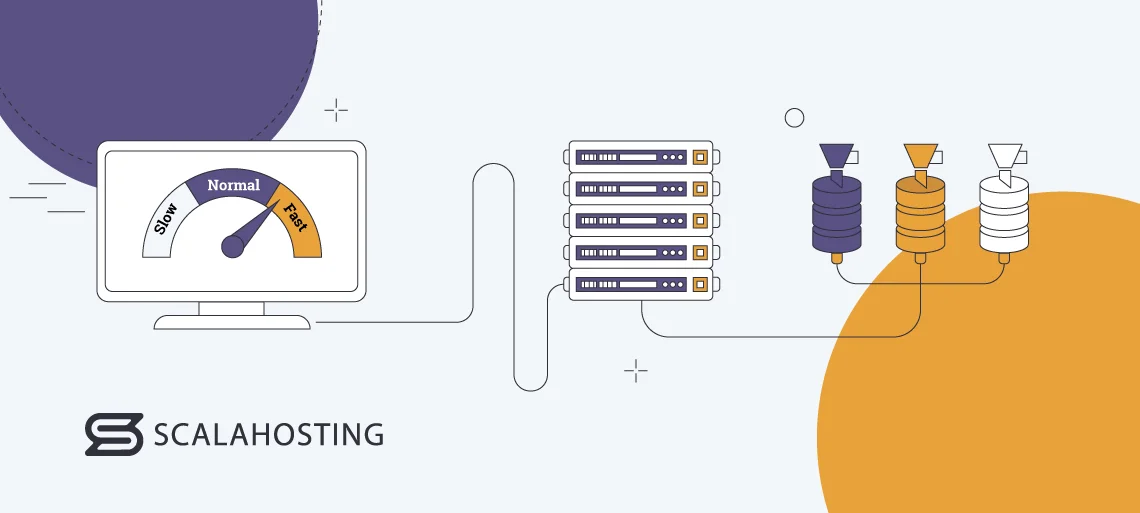
Incorporating RAID is more than a technical upgrade; it’s an investment in reliable, efficient, and scalable hosting services.
Now, RAID is cool, but it’s not without challenges
- It Can Get Techy: Grasping the different RAID levels and their specific benefits can require a basic understanding of technical concepts in data storage.
- Upfront Costs: Setting up RAID involves higher upfront costs due to additional hardware.
- Teaching Time: Clients often need guidance to understand RAID’s benefits.
- Looks Complicated: At first glance, RAID can seem like a puzzle.
So, RAID? Big thumbs up.
It’s a bit of a learning curve, but the view from the top? Worth it. It enhances data redundancy, making your web hosting bulletproof and fast, ready for whatever the internet throws at it.
Marketing strategies for RAID in managed VPS
RAID is not just a feature. It’s a game-changer. In this part, let’s unravel how to bring RAID’s benefits – superior security, impressive performance – to life for your audience. It’s more than technology; it’s a key player in the hosting arena.
- Setting the stage
Data loss. Downtime. Sluggish performance. These are the nightmares of website owners. Start here. Make it real. Show them how RAID is not just a solution but a safeguard.
- Naming the change
Introducing RAID as the hero in this story. Think of names that resonate and stick. “RAID Rescuer.” “Performance Guardian.” It’s not just branding; it’s a promise.
- Linking benefits to needs
Here’s where the magic happens. Tell the story of RAID and its impact. How does it transform a website’s hosting experience? From data loss prevention to seamless handling of traffic peaks. Make it relatable. Make it clear.
- Real-life scenarios
Stories are powerful. Share them. How did RAID save a website during peak sales? Paint the picture. Let your audience see themselves in these success stories.
- Simplifying the technical
RAID can seem daunting. But it doesn’t have to be. Break it down. Use simple terms, clear analogies. Help your audience see RAID’s benefits without getting lost in the technical weeds.
- Closing the loop
Wrap it up with a strong statement. RAID isn’t an optional extra. It’s essential. For security. For performance. For peace of mind. Drive this home.
So, marketing RAID? It’s an art.
It’s about weaving a narrative that resonates, clarifies, and connects. You’re not just selling a feature; you’re offering a fortress of reliability in the digital realm.
Start with a problem. Introduce RAID as the solution. Illuminate its benefits with stories and simple explanations. Make it relatable. Make it indispensable.
In the end, your audience should see RAID not just as a choice but as a cornerstone of their online success.
Educating and convincing stakeholders
Alright, let’s tackle the key part of making RAID a reality in your hosting setup: getting everyone on board.
It’s not just about techies loving the specs; it’s about showing everyone, from the IT crew to the execs, why RAID’s a big deal.
Tackling skepticism
To address skepticism about RAID, focus on educating stakeholders about its tangible benefits. Demystify RAID by breaking down technical aspects into understandable concepts. Use real-life examples and data to show how RAID enhances reliability and performance.
Targeted communication
Understand the unique concerns of different stakeholders. For tech-savvy individuals, discuss RAID’s technical merits. For business-focused stakeholders, emphasize how RAID contributes to operational efficiency and risk mitigation. Tailor your communication to address their specific concerns and show how RAID aligns with their goals.
In these approaches, the key is to present RAID not just as a technical solution but as a strategic business tool that addresses a range of operational needs and objectives.
Future trends: Innovations in RAID technology and hosting solutions
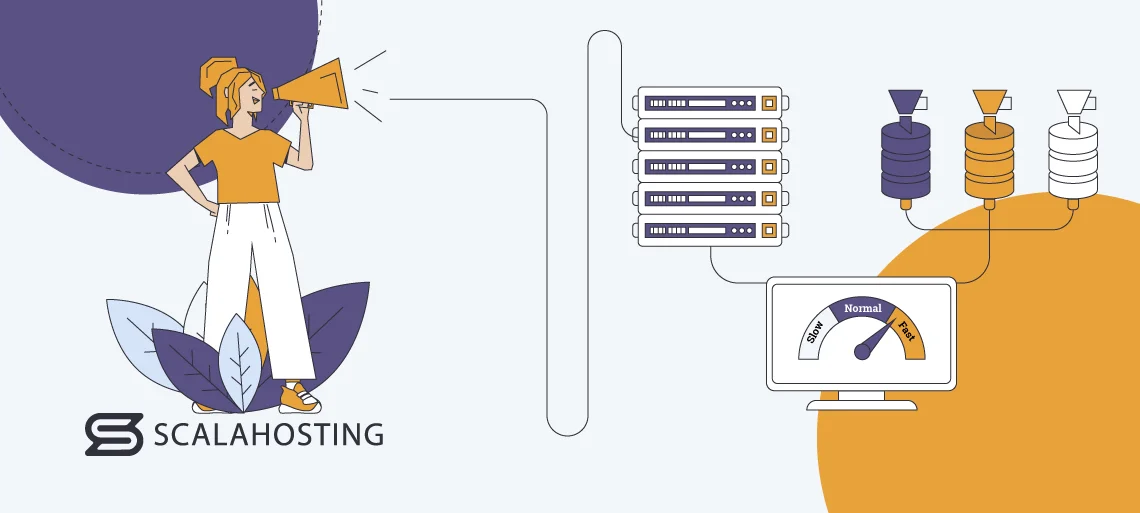
The road ahead for RAID is as exciting as it is promising. Imagine RAID systems that don’t just react to problems but predict them.
Thanks to advancements in machine learning, we’re heading toward a future where RAID setups can foresee and prevent disk failures, almost like having a crystal ball for your data’s safety.
And let’s talk speed – the union of RAID with solid-state drives (SSDs) is set to become more common. This means not just fast data access, but lightning-fast, coupled with RAID’s reliability.
Hosting Solutions: Adapting to Tomorrow
The future of hosting solutions is all about adaptability and intelligence. We’re not just moving to the cloud; we’re making it smarter. Cloud-based RAID configurations are on the horizon, weaving the flexibility of the cloud with the solid foundation of RAID. It’s like having the best of both worlds at your fingertips.
And artificial Intelligence isn’t just a buzzword––we’re already seeing the benefits they offer in managed hosting services.
Imagine AI taking care of routine maintenance, reducing errors, and providing insights for better resource management. Aside from cutting costs and 100% uptime, human resources are free to take care of…well…the human side of things.
RAID meets cutting-edge tech
As we embrace the Internet of Things (IoT) and edge computing, RAID’s role becomes even more vital. With more devices connecting every day, RAID-configured solutions will evolve to handle this data influx efficiently. It’s about preparing for a world where data is everywhere and always on the move.
A hosting landscape that’s future-ready
In essence, the future of RAID and hosting is about being ready for anything. It’s about technologies converging to create a hosting environment that’s not just about coping with the present but thriving in the future. We’re talking about a world where RAID isn’t just a component of web hosting but a cornerstone of a smart, efficient, and ultra-reliable digital world.
Embracing RAID with ScalaHosting
At ScalaHosting, we’re not just about hosting your website; we’re about turbocharging it.
That’s why we employ RAID configurations on our hypervisors and also on our backup servers. This guarantees a completely fail-safe scenario where the client will not lose their data even if something extreme occurs.
As for our cloud VPS solutions, they utilize the latest disk storage technologies that will help you easily overcome traffic surges while your website remains on top performance.
It’s a perfect match for businesses big and small, providing the reliability and scalability essential for today’s digital demands.
Discover more about how our cloud VPS hosting can elevate your online presence. Dive into the world of enhanced performance and ironclad data protection with ScalaHosting.
Ready to supercharge your website? Contact us, and we will be glad to learn more about your project!
FAQs
Q: Can RAID be used as a backup solution?
A: RAID, especially in a VPS hosting environment, is primarily for data redundancy and not a complete backup solution. It protects against hardware failures but doesn’t cover scenarios like file corruption or accidental deletions. It’s always recommended to have separate backup strategies in addition to RAID.
Q: What happens if a drive fails in a RAID configuration?
A: In RAID configurations designed for redundancy (like RAID 1, 5, or 10), if one drive fails, the system can continue to operate using the remaining drives. The failed drive can often be replaced without downtime, especially in hot-swappable setups. However, the RAID array should be rebuilt as soon as possible to restore full redundancy.
Q: Is RAID configuration difficult to set up in VPS hosting?
A: Setting up RAID in a VPS hosting environment varies in complexity based on whether it’s hardware or software RAID. Most managed VPS hosting providers offer assistance in setting up RAID, making the process simpler for users. The level of difficulty also depends on the specific RAID level being implemented.

